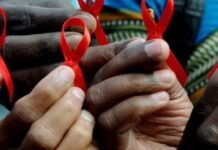Written by Faith Mwende
Every October, the world comes together to observe Breast Cancer Awareness Month, an annual campaign aimed at educating people about the disease, promoting early screening, and supporting those affected.
Breast cancer is one of the most common cancers worldwide, affecting both women and men, though it is far more prevalent in women. It begins when abnormal cells in the breast grow uncontrollably, forming a lump or mass that can spread to other parts of the body if not treated early.
While the exact cause of breast cancer is not fully understood, several risk factors have been identified that may increase the likelihood of developing the disease.
These include age, as the risk increases as one gets older, and family history, where having close relatives such as a mother, sister, or daughter who have had breast cancer can raise the risk. Genetic mutations, particularly in genes such as BRCA1 and BRCA2, also increase the likelihood of breast and ovarian cancers.
Other contributing factors include hormonal influences such as early menstruation, late menopause, or long-term hormone therapy. Lifestyle choices also play a role, including obesity, lack of physical activity, alcohol consumption, and an unhealthy diet.
It is important to note that having one or more of these factors does not mean a person will definitely get breast cancer; they only increase the risk.
Early detection remains the most effective way to fight breast cancer. Key symptoms to watch for include a lump or thickening in the breast or underarm area, changes in the size, shape, or appearance of the breast, dimpling or puckering of the skin, nipple discharge that is not breast milk, and redness, swelling, or pain in the breast. Not every lump is cancerous, but any change should be checked by a healthcare professional.
Regular screening can detect breast cancer before symptoms appear, greatly improving treatment outcomes. The most common screening method is a mammogram, which uses low-dose X-rays to look for abnormal growths.
Health experts recommend that women aged 40 and above get a mammogram every one to two years, while those with a strong family history or genetic predisposition should start screening earlier as advised by their doctor. Self-examinations and clinical breast exams are also important ways to monitor any unusual changes between mammograms.
Treatment depends on the stage and type of breast cancer but may include surgery, radiation therapy, chemotherapy, hormone therapy, or targeted therapy.
Advances in medicine have significantly improved survival rates, especially when the disease is detected early. Support from family, friends, and survivor groups also plays a critical role in recovery, helping patients maintain emotional and mental well-being throughout treatment.
Breast Cancer Awareness Month is more than just a campaign; it is a reminder for everyone to take charge of their health. Regular check-ups, healthy eating, exercise, and awareness of your own body can make all the difference. Early detection saves lives. This October, wear your pink ribbon proudly, encourage others to get screened, and help spread the message: “Check it. Don’t ignore it.”



















